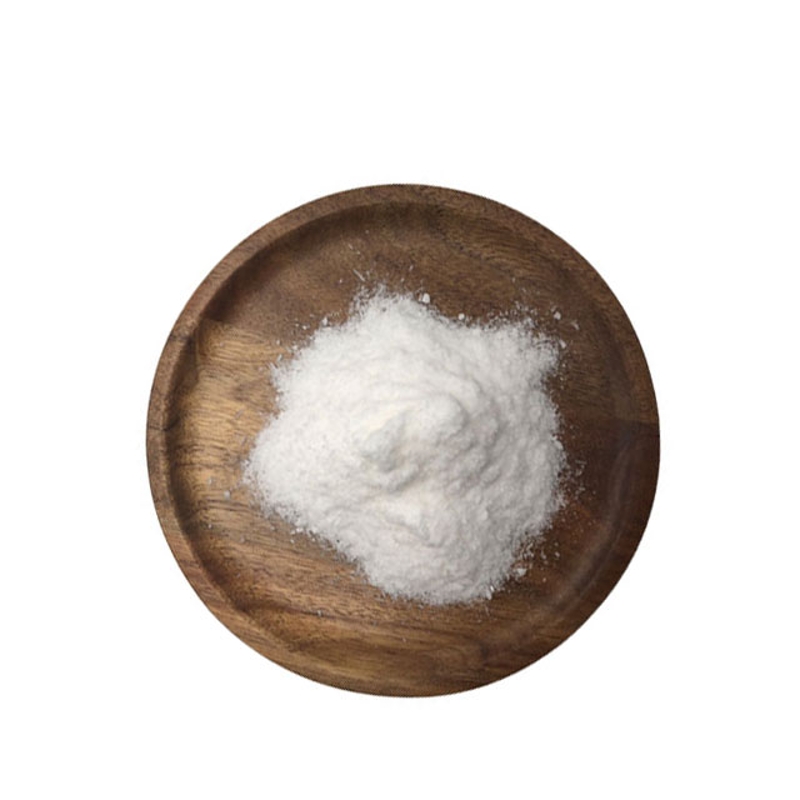-
Categories
-
Pharmaceutical Intermediates
-
Active Pharmaceutical Ingredients
-
Food Additives
- Industrial Coatings
- Agrochemicals
- Dyes and Pigments
- Surfactant
- Flavors and Fragrances
- Chemical Reagents
- Catalyst and Auxiliary
- Natural Products
- Inorganic Chemistry
-
Organic Chemistry
-
Biochemical Engineering
- Analytical Chemistry
- Cosmetic Ingredient
-
Pharmaceutical Intermediates
Promotion
ECHEMI Mall
Wholesale
Weekly Price
Exhibition
News
-
Trade Service
The corresponding author told the "medical community" that genetic differences are a possible factor.
.
.
Author | Jiang Feixiong Recently, the Canadian Journal of Neurological Science published an online study on the prognosis of new coronary pneumonia in different ethnic groups
.
This study, led by Joseph Y.
Chu, a neurologist at the University of Toronto, focuses on the difference between the prognosis of Chinese patients with new crown infection and other races, making the study very important for the Chinese population—especially research The conclusions show that compared with other local populations, the risk of death of Chinese people after being infected with the new crown has increased by 74.
3%, and the risk of neurological complications has even tripled! What is the situation with the original title of the article? Why again? The racial difference in the prognosis of the new crown infection has given Chinese medical experts the motivation to study.
The researchers pointed out at the beginning of the paper that the data released by the US CDC shows that among the hospitalized patients infected with the new crown, the proportion of blacks in the total population Much higher-that is, the prognosis of the new crown infection may show racial differences
.
The research team for this paper therefore wanted to investigate whether similar phenomena exist in Ontario, Canada, where Chinese and South Asians account for a large proportion of the total population
.
According to research, among the total population of Ontario, Chinese accounted for 19.
4% and South Asians accounted for 29.
6%.
Together, the two accounted for approximately 50% of the total population of Ontario
.
The study included patients who tested positive for the new crown among Ontario residents from January 1, 2020 to September 30, 2020
.
It should be noted that during this time period, the main epidemic of the new coronavirus is still the original wild type, rather than the various mutant strains that are now raging everywhere
.
The age span of patients included in the cohort is 19-105 years old
.
Among them, there were 1186 Chinese patients with an average age of 50.
7 years; 3459 South Asian patients with an average age of 42.
1 years; other people (excluding Chinese and South Asian residents) 42,547 people with an average age of 47.
6 years
.
The investigator's method of enrolling Chinese people used surname screening, so it may not have included all Chinese patients who were infected at this stage
.
Among the Chinese patients included in the cohort, 14.
0% were older than 80 years old, 3.
8% of South Asian patients were older than 80 years old, and 12.
4% of other populations were older than 80 years old
.
There is no significant gender difference in the proportion of Chinese patients in the cohort.
South Asian patients account for 53.
9% of males, and males account for 46.
4% of the others
.
The basic health status of the Chinese is no worse than that of other races.
In terms of the proportion of basic diseases in each ethnic group, the research team conducted very detailed statistics
.
Except that COPD is significantly lower among Chinese (1.
9%) than others (3.
6%), asthma (11.
4% VS 16.
0%), diabetes (17.
6% VS 17.
4%), hypertension (32.
8% VS 30.
5%), heart Dementia (3.
4% VS 5.
3%), dementia (11.
8% VS 11.
5%), chronic kidney disease (4.
6% VS 5.
1%), long-term care required within 90 days of the positive test day (13.
7% VS 12.
2%), hospitalization within the past 5 years ( 26.
7% VS 28.
3%) there is no significant difference from other populations
.
In terms of more baseline statistics such as cardiovascular, neurological, liver and kidney diseases, and cancer, Chinese patients did not show significant differences from others, while South Asian patients may have a lower prevalence of some underlying diseases due to their younger baseline data.
For example, patients with dementia account for only 3.
1% of South Asian patients
.
The Chinese have a higher risk of COVID-19 mortality and heart and brain complications.
Although the Chinese are not inferior to other races except South Asians in terms of baseline health data, the Chinese are different from other ethnic groups in terms of the outcome of COVID-19 infection— —The bad kind
.
As shown in the table below, the statistical results show that compared with other people, the risk of death for Chinese people after infection with the new crown is 1.
743 times (95% confidence interval 1.
344-2.
262), and the risk of cardiovascular complications is 1.
433 times (95% confidence interval 0.
903-2.
274) The risk of neurological complications was 3.
141 times (95% confidence interval 1.
943-5.
080), and the risk of hospitalization and emergency department was also higher, which was 1.
437 times (95% confidence interval 1.
263-1.
635)
.
At the same time, we can see from the table that the risk of death and complications of South Asian patients is lower than that of Chinese, and in most cases lower than others
.
One of the factors for this difference is that the average age of Chinese patients is higher.
Therefore, the researchers conducted a subgroup analysis of age groups to determine the influence of age.
The results showed that even in the population under 65 , Chinese patients also have higher mortality, cardiovascular complications risk, hospitalization rate, emergency room visit rate, and severe illness rate than South Asian patients and other patients
.
Subgroup analysis of patients under 65 years old.
The blue bars represent the data of Chinese patients, orange is South Asian patients, gray is other patients, and yellow is the total population data.
Among elderly patients over 65, the risk of death of Chinese patients is compared.
It is even more significant, and the severe disease rate is still the highest-why on earth? The paper pointed out that the average age of 3 years of Chinese and other populations has a certain impact on the prognosis, but it does not fully explain this obvious difference
.
Researchers review the baseline data and believe that the prevalence of basic diseases and basic cardiovascular and neurological complications of Chinese is not higher than that of other races, and the prevalence of individual diseases is even lower, so it is difficult to be considered Chinese.
The baseline health data is worse, leading to worse outcomes
.
So, what are the possibilities? Recently, Nature published papers and comments, pointing out that genes affect the prognosis of human infection with new crowns.
Certain genes make carriers more likely to be infected with new crowns, and certain genes make carriers more likely to develop severe illnesses
.
In a paper published by Nature, the author mentioned that some of the newer studies of East Asian ancestry have found genetic loci that affect the severity of the new crown infection, and called for global cooperation to conduct more racially diverse genetic studies to clarify The relationship between race and the prognosis of the new crown
.
The author of the relevant news review dialogue paper "Medical Circle" published this month by Nature contacted Professor Joseph Y Chu, the author of this paper from the University of Toronto, and asked him to share his interpretation and thoughts on this important research with our readers
.
Medical circle: Hello, Professor Chu.
Recently, you published an article about COVID-19 AND ITS CARDIAC AND NEUROLOGICAL COMPLICATIONS AMONG ONTARIO VISIBLE MINORITIES which is very important to Chinese people all over the world
.
The data in this study show that the Chinese have a higher mortality rate from the new coronary disease than other ethnic groups in the region, and the incidence of cardiovascular and neurological complications is also higher
.
Why? Is it related to ethnic genetic differences? Professor Joseph Y Chu: Hello, thank you for your attention
.
This is a large sample size, population-based retrospective study conducted in Ontario, the most populous province of Canada
.
Canadian Chinese are one of the ethnic minorities with a relatively high percentage of Canadians
.
In addition to being older (3 years older than other populations on average), we also used multivariate logistic regression analysis to determine whether race/ethnicity is a determinant of death and cardiac and neurological complications
.
Excluding factors such as age, gender, income, and long-term care, the ethnic factor of "Chinese" is independently associated with a 74.
3% increase in the risk of death
.
However, this increased risk of death and a worse prognosis of the heart and nervous system cannot be explained by the difference in the underlying disease before the new coronary infection! There are many factors that can be used to hypothetically explain this important finding, and the genetic differences of different races may of course be an explanation
.
For example, the ACE2 receptor on the cell surface, as the main invasion receptor of SARS-CoV-2, may have different expressions among different races, such as Chinese and South Asians, and blacks and whites
.
Some studies have found this problem in the past.
For example, ACE deletion allele is associated with the susceptibility and mortality of SARS-CoV-2 infection: an epidemiological study of Asian population (ACE deletion allele is associated with susceptibility to SARS-CoV-2 infection and mortality rate: An epidemiological study in the Asian population) proposed this phenomenon
.
References[1].
Chu, J.
, Kaliwal, Y.
, Koh, M.
, Chen, R.
, Chow, C.
, Ko, D.
,.
.
.
Moe, G.
(2021).
COVID-19 AND ITS CARDIAC AND NEUROLOGICAL COMPLICATIONS AMONG ONTARIO VISIBLE MINORITIES.
Canadian Journal of Neurological Sciences / Journal Canadien Des Sciences Neurologiques, 1-29.
doi:10.
1017/cjn.
2021.
148[2].
COVID-19 Host Genetics Initiative.
Mapping the human genetic architecture of COVID-19.
Nature (2021).
https://doi.
org/10.
1038/s41586-021-03767-x[3].
Human genetic variants identified that affect COVID susceptibility and severity doi: https://doi.
org /10.
1038/d41586-021-01773-7 Source: Medical editor in charge: Tian Dongliang Proofreading: Zang Hengjia Plate-making: Shu Qian's wonderful review in the past.
Asking for red envelopes from patients' families? The doctor was suspended from practicing for six months.
A new trick for Tokyo Olympics epidemic prevention: a cardboard bed to prevent the athletes from strenuous exercise on the bed.
After the body lives in the little monster "myasthenia gravis".
.
.







